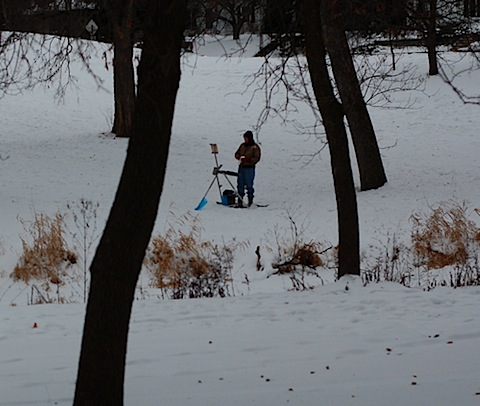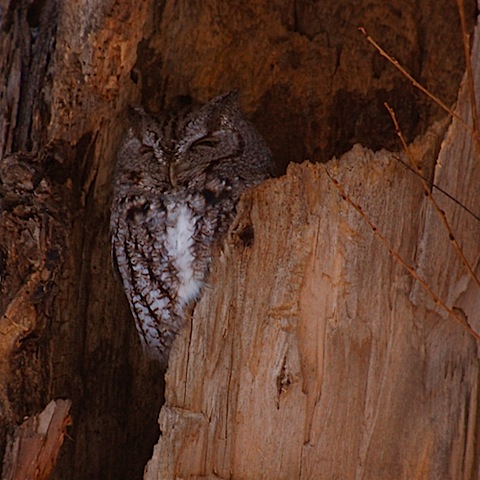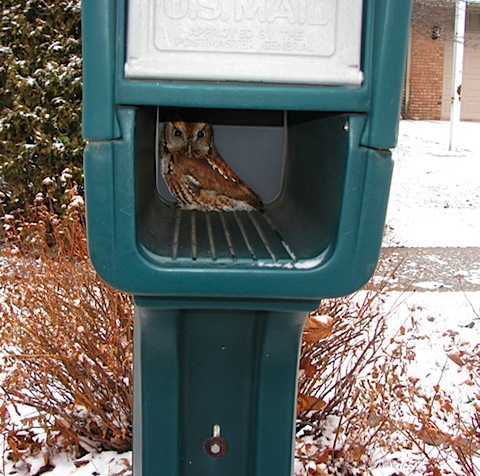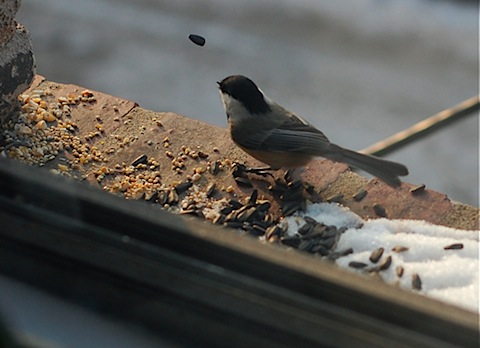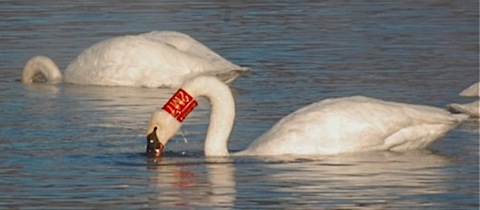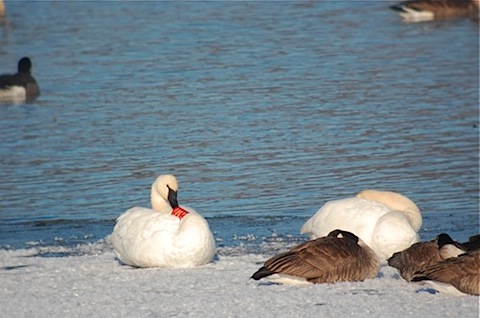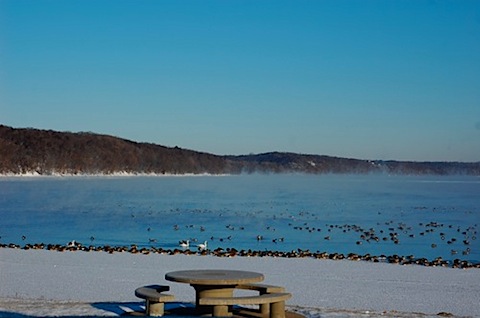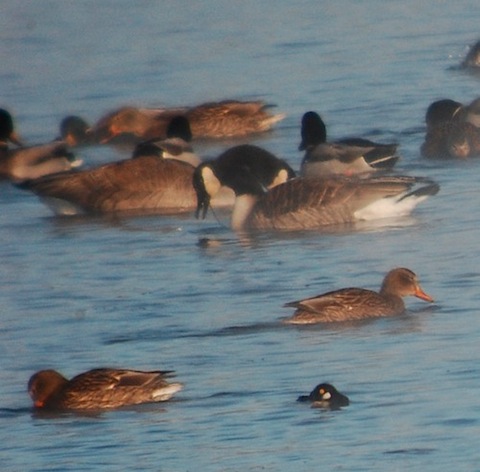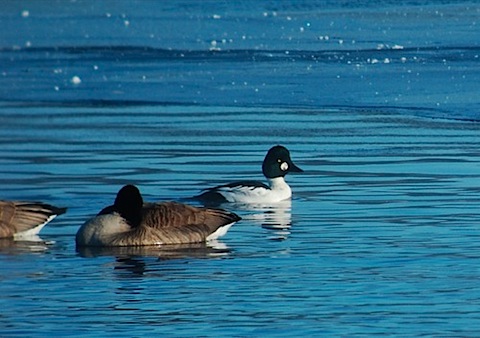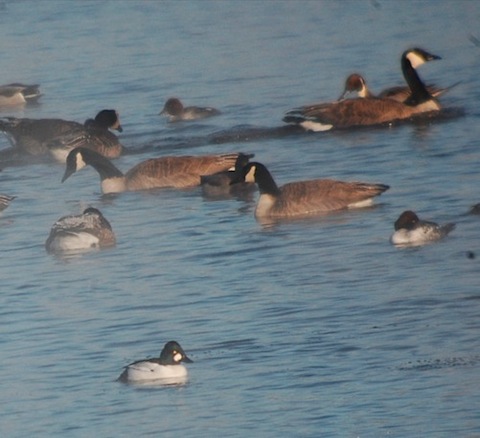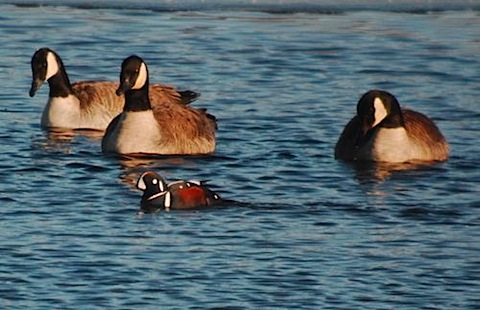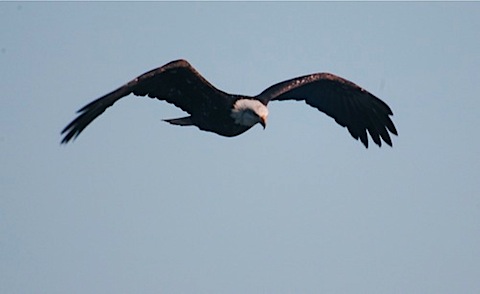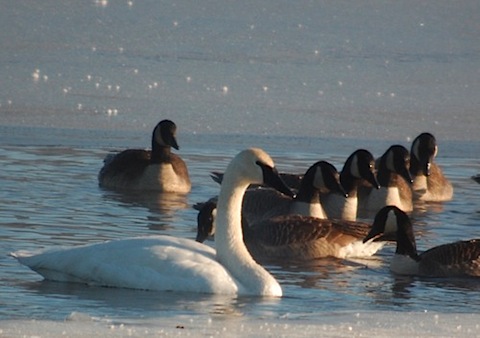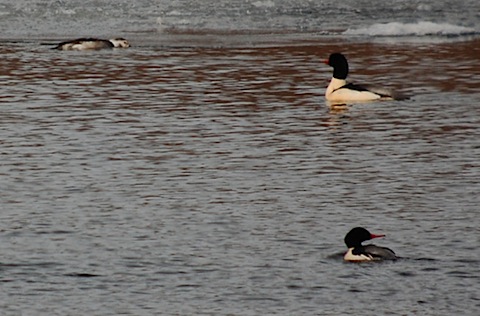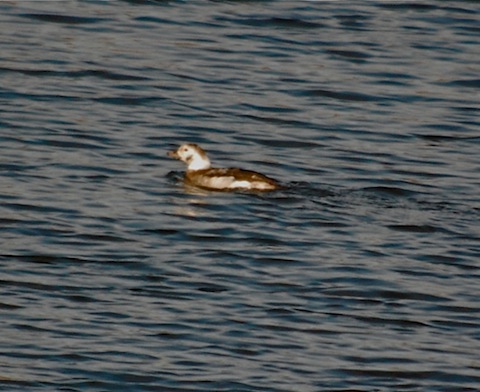
Last Saturday I helped out with the St. Paul Christmas Bird Count. I love the above photo, that's two of our team members standing on the frozen Mississippi River counting ducks with the downtown St. Paul skyline behind them. My original intent was to just be part of a team, but St. Paul Audubon needed someone to lead the count and I thought it would be fun to do a section that was part of the National Park that I work for. We mainly worked the Lilydale Park section. I had great volunteers and it was a treat to meet some new local birders. It was an easy going group and I am so grateful to John who introduced me to Jerabek's Bakery (my new favorite bakery and a must visit if you are in St. Paul). I requested that we meet before dawn at 6:30am and everyone did. We tried to do an owl survey and got completely skunked. I played calls for saw-whets, eastern screech, barred, and great horned (keep that in mind for later in this post). However, even though we were nooged on owls, we were rewarded with excellent views of river otters rolling around in an open patch of water on Pickerel Lake--bonus! It was too dark for photos, but man what cool mammals to watching through the scope in the dark (thank you Swarovski for that most excellent light gathering ability).

Lilydale is an interesting little park in our metro area and one that I'm loving more and more. For one thing, you can get permits to go fossil hunting there--how cool is my town? You can go fossil hunting in the Twin Cities metro area! The bluffs at Lilydale are chock full of St Paul brickyard history as well as geologic history. You can see three distinct layers of rock from when this used to be part of an ocean: sandstone, limestone and shale. Many come to look for the fossils of ancient sea life in the shale and limestone. Water trickles through and creates lovely ice falls which attracts a few climbers in winter. We were lucky to get a day for our count that had temperatures in the teens and twenties. When we stood still it felt chilly, but as we climbed the hill in Lilydale, we stayed warm.

Robins were our most common species (if you don't count the ginormous flock we tallied in downtown St Paul). This interesting Robin was found in a yard by one of my team members--it's lacking pigment in some of its feathers. It's not leucisitic--the colors are not washed out, it's just some of the feathers are white. Scientifically, something cannot be a partial albino--it's one or the other, there is no in between. There are a lot of names tossed around out there, but no one has come up with an easy term to call a bird with patches of pure white, other than to say that the bird lacks pigment in some feathers.

Here is the front of the robin--you can see it was lacking some pigment on its breast feathers as well.

We did see quite a few red-tailed hawks like the above immature bird. I was surprised that we did not get any Cooper's hawks, I usually see one at Lilydale, but they remained hidden. This bird was actively hunting the field near the boat launch off of Shepherd Road.

One of our goals was to get the down St. Paul peregrines included on our count. I chuckled as I scanned a peregrine box on the Landmark Center that had a red-tailed hawk perched on it.

We did eventually find some peregrines, so I was happy we kept up that goal.

While we were out documenting as many bird species as we could, we were surprised to find a muskrat out and about on the ice. This little mammal should be tucked away in a little mound in a marsh, sleeping away the winter. This one was on ice right in downtown St Paul, not near too many places for a muskrat den.

Just as I was thinking, "Wow, that's an easy target for an eagle," one showed up. The blue arrow is the muskrat, the red arrow is a bald eagle. Can you see the eagle's landing gear down? The muskrat saw the eagle and smartly slid into the water.

The bald eagle landed on the ice and watched the edge where the muskrat dove into the Mississippi River. Then a moment later--the muskrat popped back up on the ice. The eagle stared, almost as if assessing the situation. The muskrat behaved as though the eagle was not there. The watched intently. I wondered if it realized that if it spread its wings and went for the muskrat, that it would easily see the predator and have time to dive back into the river. The muskrat trundled along, turned and suddenly seemed to notice the eagle. It hopped a little (almost as if it said, "DOH!") and plopped again into the river and hightailed it towards a separate piece of ice. The eagle remained on the ice for quite some time. So long, that we had to leave to count other birds.

After we did Lilydale Park and downtown St. Paul, some of my group went home (understandable, it was a long day). The remaining group went out to cruise the neighborhoods for bird feeders and a few species we missed at the park--like turkeys. We found a huge flock of 12 marauding a rather upscale neighborhood. By the end of the afternoon, I looked at the time, I only had about an hour before I had to work an evening shift at the park service and the light was fast fading. We made one more pass at the park.
We passed some trees that I thought looked good for saw-whet owls. A cedar and a pine. I left my scope in the trunk and said, "That will guarantee we'll see something good." We walked underneath the trees and there was quite a bit of small owl poop. I was convinced if we stared at the cedar long enough, a saw-whet owl would materialize. Suddenly, we heard a flock of very angry chickadees. I looked in the direction of the sound...I saw a lone cedar tree. "That's where the saw-whet is, let's go," I said.
We crossed the street and approached the tree surrounded by alarmed chickadees. We were within about 30 feet of the cedar and a medium sized owl flushed from the cedar. I saw distinct buff panels on the wings and realized instantly what we flushed--a long-eared owl. It perched in some thick branches nearby, I got a quick look at the slender bird and it flew further away. DOH!
I wasn't expecting a long-eared. If I had, I would have approached that cedar in a different way, they are so cagey. We looked at the base of the cedar it was perched in and found much larger poop marks and a fresh pellet. I have Tuesday off, I might head back to Lilydale and see if I can get it in the scope and take a photo.
All and all, it was a great day. I was lucky to have such a great group to count birds with and I appreciated all of their help. One was even a fellow beekeeper--loved to meet someone else working the hives.

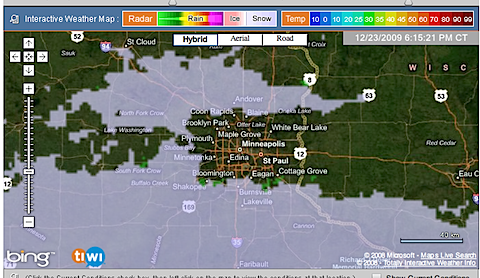 As I type this entry, this is what the snow cloud RADAR looks like from KSTP. Non Birding Bill and I live in Minneapolis. The surrounding clouds kind of look like
As I type this entry, this is what the snow cloud RADAR looks like from KSTP. Non Birding Bill and I live in Minneapolis. The surrounding clouds kind of look like 